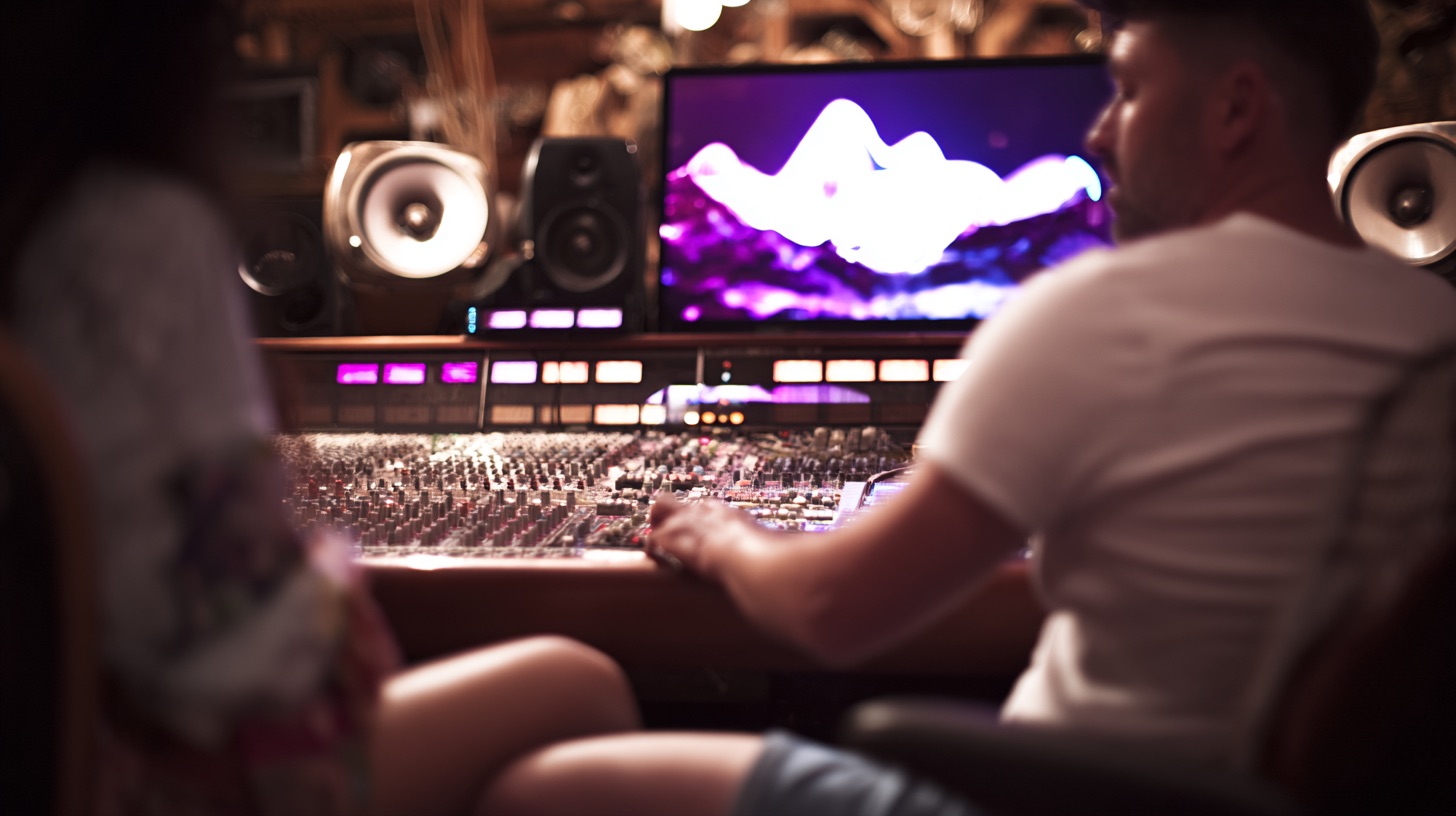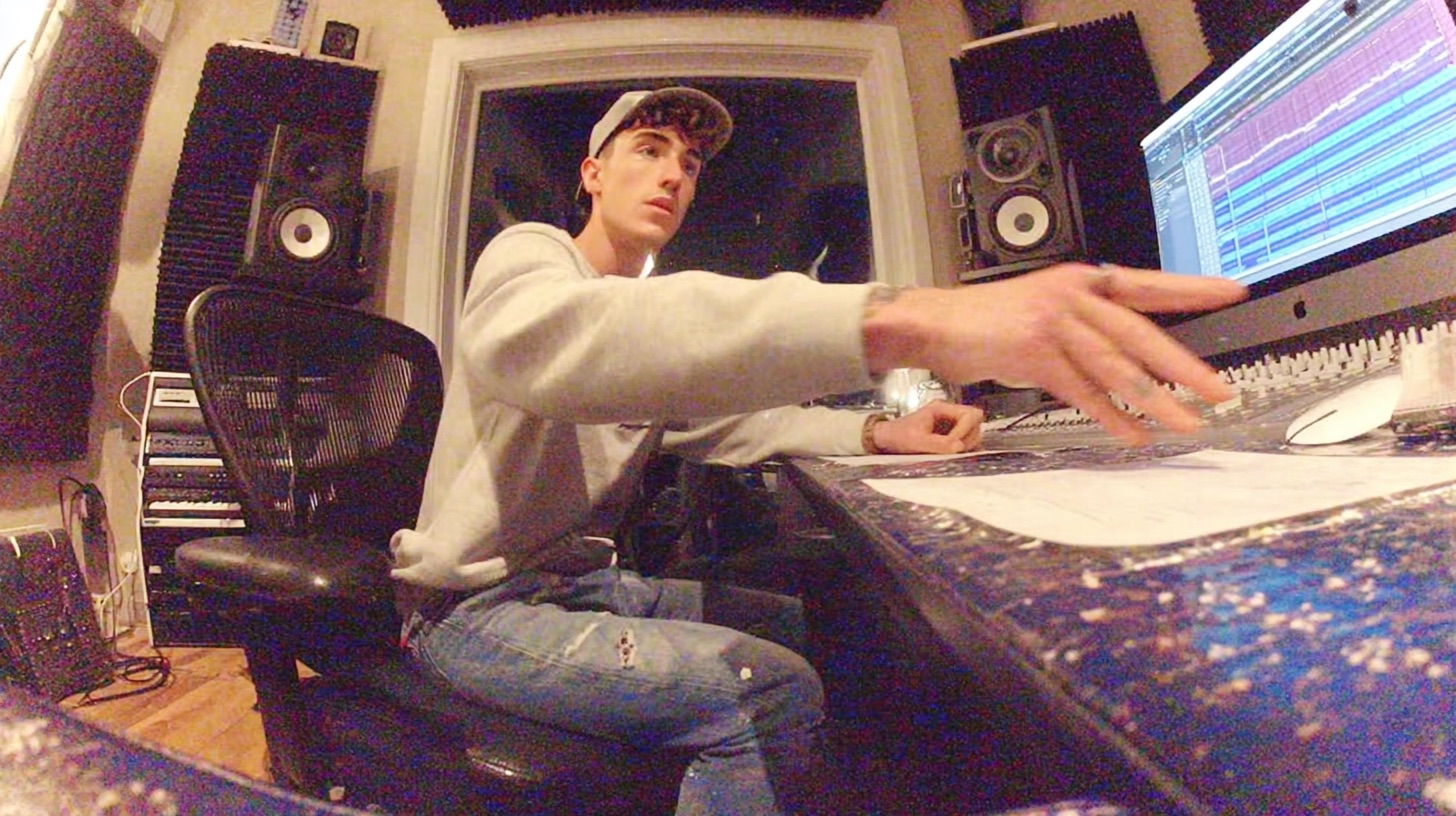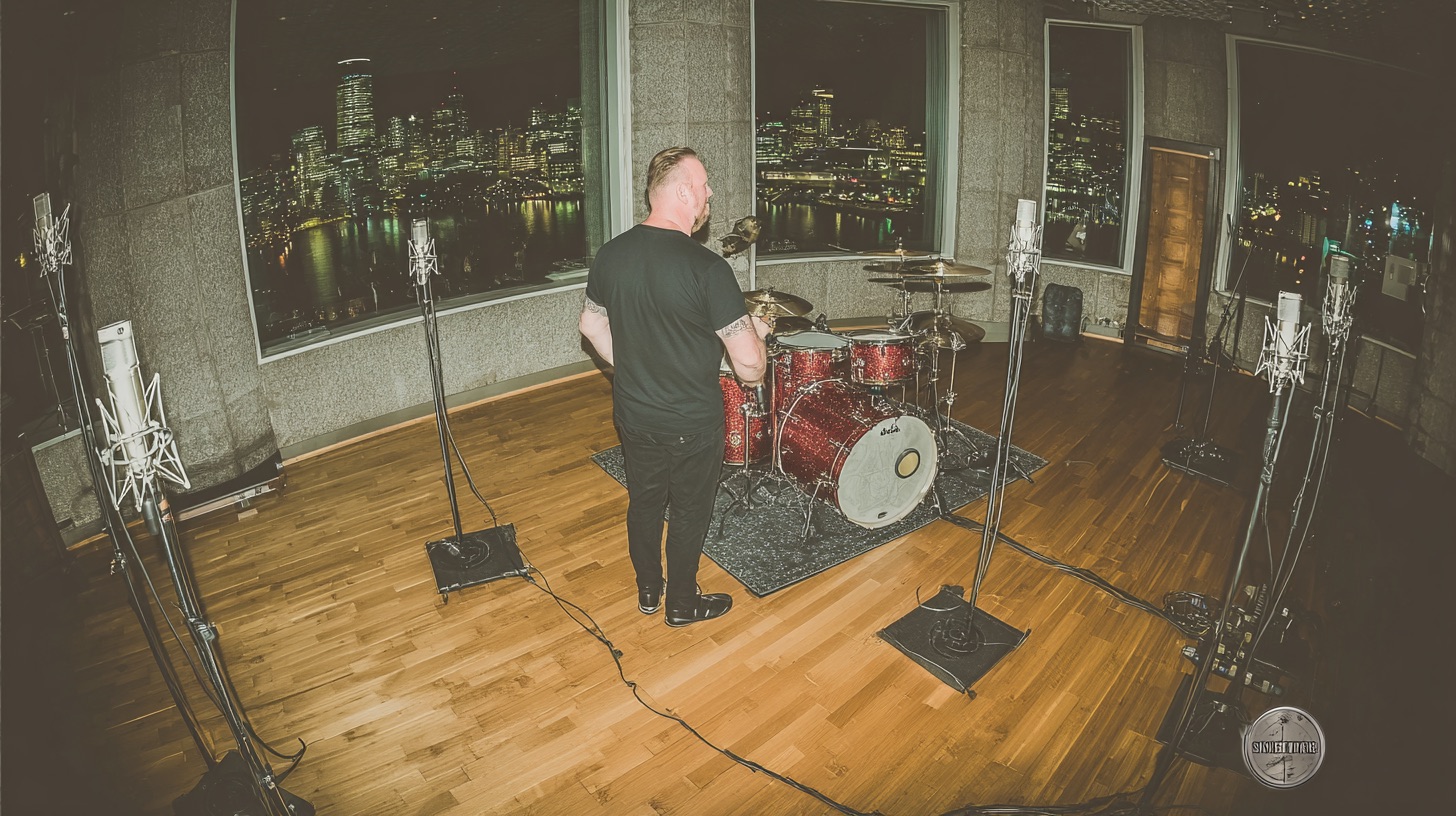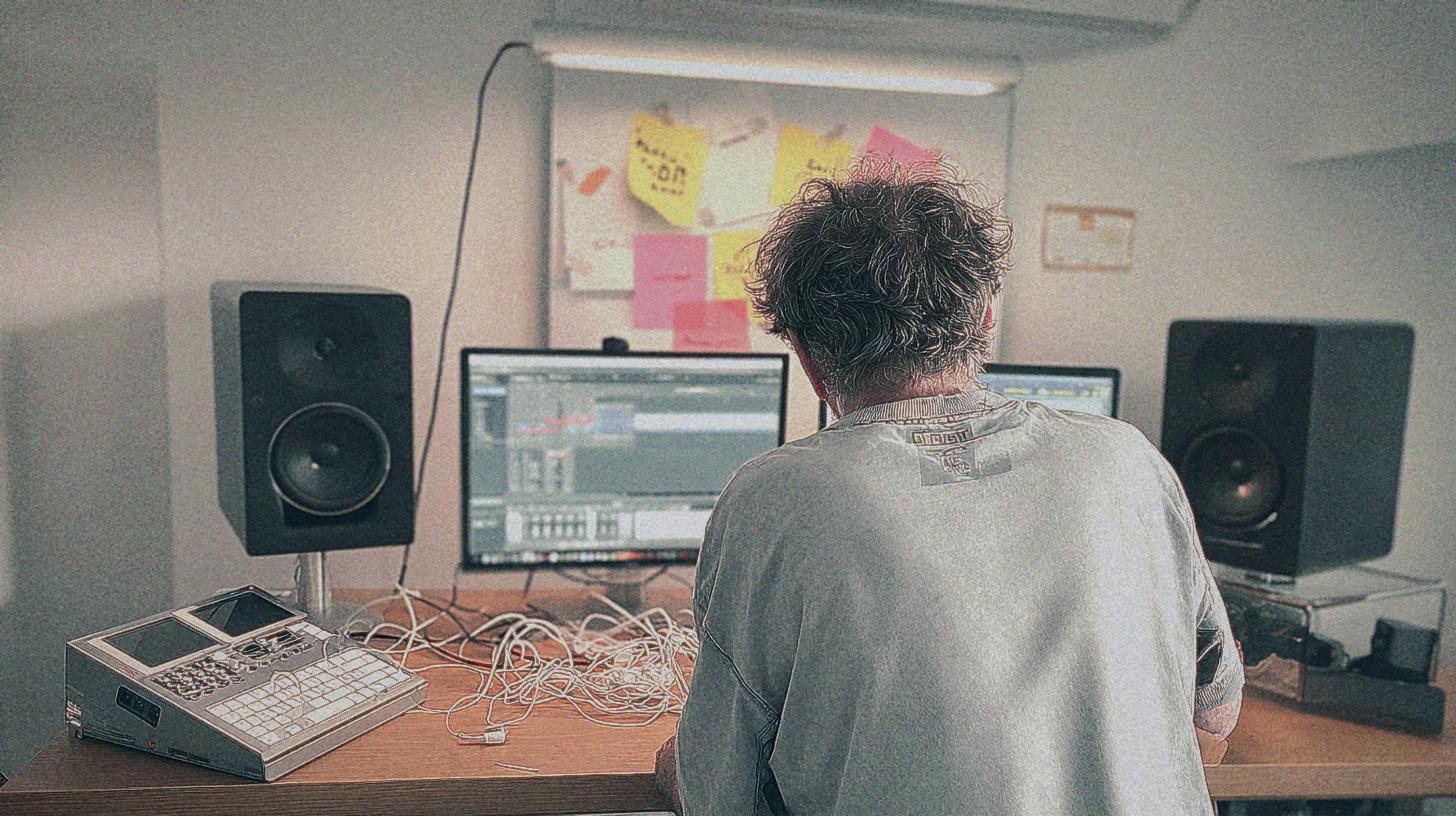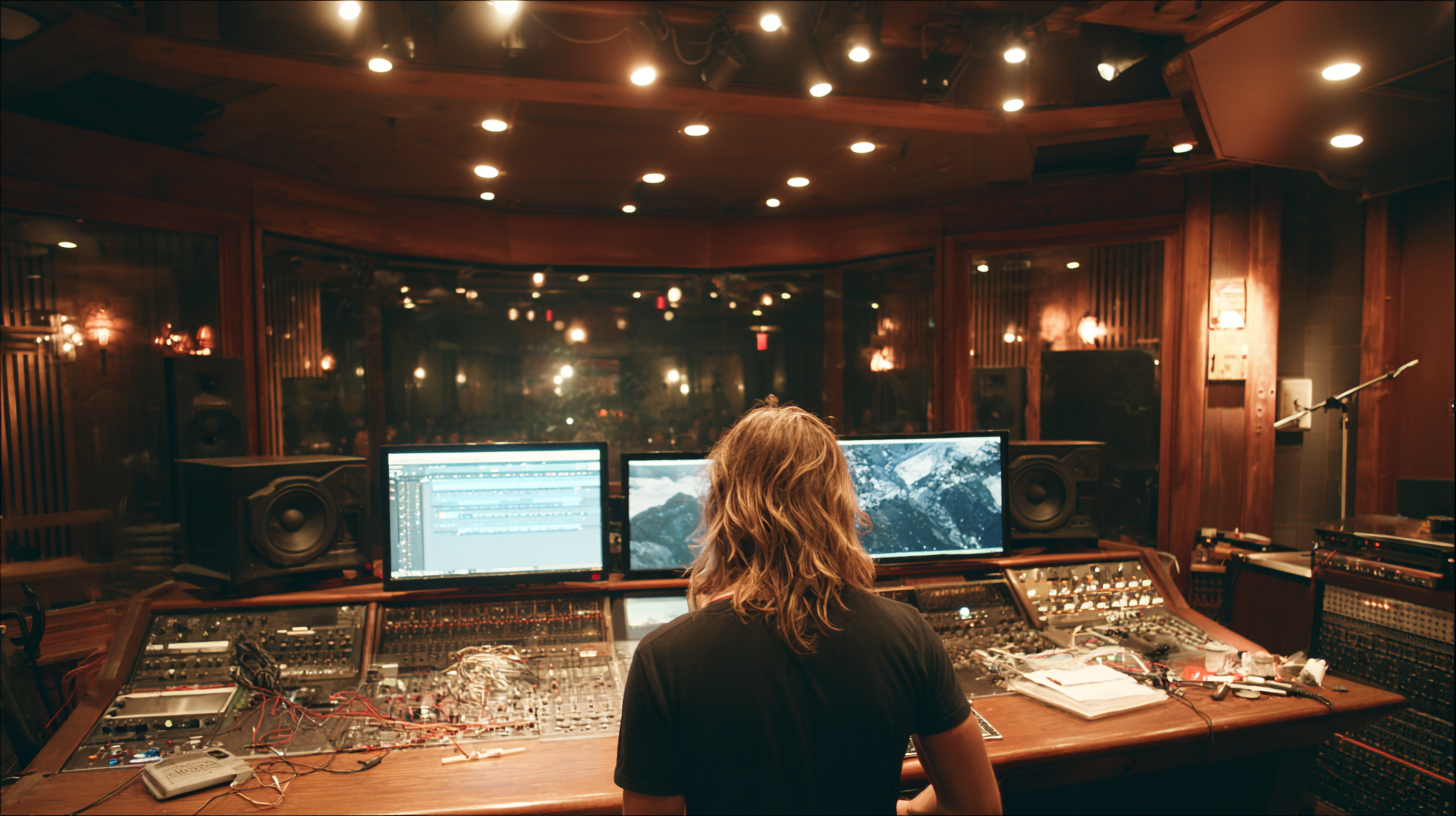
Neural DSP: Why These Amp Sims Are Crushing It For Metal
Nail The Mix Staff
For years, if you wanted truly monstrous, record-ready metal guitar sounds, the path was clear: real amps, cranked loud, with carefully chosen mics. Amp sims? They were… okay. Good for sketching ideas, maybe some demo work. But for the final product? Many experienced producers would politely (or not so politely) tell you to fire up the tubes. Then Neural DSP came along and flipped the entire script. Suddenly, amp sims weren't just "good enough"; they were contenders, capable of delivering tones that could stand toe-to-toe with the real deal, plus a whole lot of extra flexibility.
If you’re chasing those earth-shattering, modern metal tones, especially with low-tuned guitars, Neural DSP plugins have become almost indispensable. Let’s dive into why they’ve taken the metal world by storm and how they can help you nail those brutal sounds.
The Wild West of Low Tunings: A Quick Trip Down Memory Lane
Before we get into the digital magic, it’s worth remembering how much the landscape of "heavy" has changed. When I first started slinging a six-string, standard E was king. E flat or Drop D felt like you were pushing the boundaries of aggression. I vividly recall making the jump to Drop C and thinking it was insanely low, with some purists claiming guitars weren't meant for such sonic depths. Fast forward to today, and Drop C almost feels like a classic rock tuning compared to what’s out there. Bands are routinely dropping to F, E, or even lower on 7, 8, and even 9-string guitars.
This evolution highlights a key point: "low" is relative. What truly matters is writing killer parts that suit the tuning you're in. Super low tunings inherently bring more low-end information, which means you need to be mindful of definition, especially on those seismic lowest strings. This is why simpler, breakdown-style riffs often feature prominently with ultra-low tunings – they just work and sound immense. And let's be honest, hitting a massive power chord on an 8-string in F# just feels incredibly powerful and fun. It’s like wielding a bass and a guitar simultaneously.
But getting those low tunings to sound good, especially back in the day, was a serious mission.
The Gear Grind for Low-End Glory
In the not-so-distant past, most gear wasn't optimized for these subterranean tunings.
- Pickups: Standard pickups often turned to mud, lacking the clarity to handle the low-frequency onslaught. You had to hunt for specific models like the Seymour Duncan Invader or DiMarzio D Activators, or later, active pickups like EMGs, to get any sort of articulation.
- Guitars: Standard scale lengths struggled with string tension, leading to flabby strings and intonation nightmares. You’d need super heavy gauge strings (like a .060 or .070 for the low C on a 6-string, sometimes even heavier for F).
- Amps: Many classic tube amps, while legendary for standard tunings, just weren’t voiced to handle the extreme low-end without farting out or becoming a woofy mess. Amps like the Peavey 5150/6505, Mesa/Boogie Dual Rectifier, or various Diezel models became popular because they could often handle lower tunings better than, say, a vintage Marshall Plexi.
I remember when we put out an instrumental album called "Avalanche of Worms" back in 2009. We cooked up this tuning on a 6-string: F-F-C-F-A-D. The top four were like Drop C, but with those low F octaves. Nobody was really tuning to F on a 6-string like that then! It sounded massive, but man, it was a battle. We didn't know about baritone guitars, and 7-strings weren't as ubiquitous. Staying in tune was a constant fight, and fretting notes cleanly without them going sharp or dead was tough. Modern extended-range guitars, like my Kiesel 8-string, or dedicated baritones, are built for this stuff now and make life much easier, though it’s still worth considering if you should buy a custom guitar for metal to meet these specific needs.
Tuning: The Eternal Struggle (Especially Down Low)
Tuning super low presents its own set of headaches. Many standard tuners struggle to accurately register those low frequencies. And even when you think you're in tune, the act of picking, especially hard, can send the note sharp – a phenomenon bass players know all too well (often tuning their basses 10-15 cents flat in the studio to compensate for attack sharpness).
This is where the Evertune bridge became an absolute game-changer for low-tuned guitars. It’s a purely mechanical system that keeps your strings at perfect pitch regardless of picking dynamics or neck shifts. It’s a godsend for recording tight, in-tune low-tuned rhythms. Some folks talk about an "Evertune tone tax," but I find that with fresh strings, they sound fantastic. Bending feels different, sure, but for relentless, precise rhythm work, it’s incredible.
Amp Sims Before Neural DSP: Good, But Not Quite "Pro" For Metal
So, with all these challenges, you can see why guitarists and producers were hungry for solutions. Amp simulation plugins have been around for a while. Early iterations from brands like Line 6 (with their POD series) and Native Instruments (Guitar Rig) were revolutionary for their time, offering a ton of sounds in a box. They got better and better, with companies like IK Multimedia (AmpliTube), Positive Grid (BIAS), and Scuffham Amps (S-Gear) pushing the envelope.
These sims were great for practice, songwriting, and even some lighter genres. But for high-gain metal, especially with the complexities of low tunings, many seasoned ears felt something was missing. The "feel" wasn't quite there, the dynamic response could be a bit static, or they just didn't have that visceral punch and clarity of a mic'd up, cranked amp. You could get usable tones, but getting inspiring professional tones that sat perfectly in a dense metal mix often still meant firing up the real hardware.
Enter Neural DSP: The Amp Sim Revolution For Metal
Then Neural DSP burst onto the scene, and things changed—fast. Founded by Douglas Castro, they didn’t just aim to emulate amps; they aimed to capture the entire signal chain with an unprecedented level of accuracy and a focus on player experience. And they nailed it, especially for metal.
What made Neural DSP different?
- Algorithmic Depth: Their modeling goes incredibly deep, capturing not just the amp's EQ curve, but its dynamic response, sag, and the complex interaction of components. This means the plugins feel more like real amps when you play them.
- Artist Collaborations (Archetypes): Teaming up with iconic guitarists like Plini, Tosin Abasi, Gojira, John Petrucci, Nolly Getgood, Cory Wong, and more, they created "Archetype" plugins. These aren't just amp models; they're complete, curated signal chains including pre-effects (gates, boosts, compressors), multiple amp heads, a sophisticated cabinet module with IRs, and post-effects (EQ, delay, reverb).
- Focus on Modern Tones: While they have versatile offerings, many of their plugins are perfectly voiced for modern rock and metal, including those demanding low-tuned applications.
- Exceptional Cab Simulation: The built-in cabsim section in Neural DSP plugins is top-notch, featuring a selection of expertly captured impulse responses (IRs) and the ability to load your own. The interface for positioning mics (virtually) is usually intuitive and powerful.
Suddenly, you could plug your guitar into your interface, load up something like Archetype: Gojira, Archetype: Nolly, or even learn how to dial in a sick metal tone with the Omega Granophyre, and get a sound that was not just good, but genuinely mix-ready and inspiring. The debate about "real amp vs. sim" started to shift significantly. Pros who swore by tubes began publicly praising and using Neural DSP.
Taming the Low-End Beast with Neural DSP
- Built-in Noise Gates: Essential for tight, chuggy, percussive riffs on low-tuned guitars. The gates in Neural DSP plugins (like the one in Archetype: Gojira or the Fortin Zuul in the Fortin Nameless Suite) are highly effective. Try a fast attack, a moderate release, and set the threshold to silence string noise between notes without cutting off your sustain.
- Pre-Effects (Boosts/Overdrives): Many Neural DSP suites include a virtual overdrive pedal, often modeled after a Tube Screamer (TS). Using this before the amp model with settings like Drive 0, Tone 5-7, and Level 10 is a classic metal trick to tighten the low-end and add attack, making your riffs clearer and punchier. This is crucial for preventing low-tuned guitars from sounding flabby.
- Amp Models Built for Mayhem: Amps like those found in Archetype: Nolly (based on his modified amps), the aggressive circuits in the Fortin Cali Suite or Nameless Suite, or the versatile high-gain channels in Archetype: Gojira are designed to handle massive amounts of gain and low frequencies without turning into a muddy mess. They retain clarity and aggression.
- Sophisticated Cab Modules & IRs: The cabinet section is arguably one of the most critical parts of a guitar tone. Neural DSP’s cab modules offer a selection of excellent stock IRs, options to blend multiple mics/cabs, and the ability to load third-party IRs (like those from OwnHammer, Celestion, or York Audio). Choosing the best impulse responses for metal guitars is a crucial step in shaping your final sound. Experimenting with different IRs and virtual mic placements (e.g., an SM57 for bite, an R121 for body) can drastically shape your tone.
- Post-EQ Power: After the amp and cab, there's usually a dedicated EQ module. This is where you can do surgical cuts to remove fizzy high frequencies (often in the 5kHz-10kHz range) or make broader tonal adjustments to help the guitar sit in the mix. A solid understanding of how to EQ a metal guitar is fundamental to this process. For more in-depth EQ strategies for metal, check out our EQ strategies for mixing modern metal.
Layers of Control: The Buster Odeholm Approach, Digitized
Producers like Buster Odeholm (known for his work with Humanity's Last Breath, Vildhjarta, and his own project Thrown) are masters of crafting incredibly heavy yet clear low-tuned guitar tones. His approach often involves meticulous layers of control: Evertune-equipped guitars, multi-band compression, precise EQ, and sometimes even different types of distortion blended across various frequency bands.
While you might still use external plugins for some of that advanced processing, Neural DSP plugins provide many of these control layers right within the box. You get the gate, the pre-boost, the amp's inherent character, the cab sound, and the post-EQ. This "all-in-one" aspect makes it much easier to dial in complex tones quickly. If you do find yourself needing even more dynamic control over specific frequency ranges, especially in the low-mids or sub-bass, consider using a multi-band compressor after your Neural DSP instance. This allows you to control low-end on metal guitars with surgical precision, much like the pros do. For tips on that, our metal compression secrets guide can offer some insights.
The key is that you need to control the immense power of low-tuned guitars. If you don't, they'll swallow your entire mix and sound like garbage. Neural DSP gives you the tools to wield that power effectively.
Neural DSP in Your Modern Metal Workflow
- Flexibility: Recorded a killer DI take but not sure about the amp? No problem. Swap Archetypes, tweak settings, audition different cabs – all non-destructively. This in-the-box flexibility mirrors the benefits of traditional re-amping, and it’s vital to learn how to re-amp metal guitars without losing tone whether you’re using hardware or software.
- Consistency: Once you dial in a tone you love, save it as a preset. Get consistent tones across different songs or projects.
- Recallability: Open up an old session, and your exact guitar tone is there, perfectly preserved.
- Silent Recording: No need to crank a 100-watt head at 3 AM. Get massive tones through your headphones or studio monitors at any volume.
- Portability: Your entire amp collection can live on your laptop. This philosophy extends to their hardware unit, the Quad Cortex, which packs this power into a floor-based profiler.
Beyond the Plugin: Learning to Mix Modern Metal
Neural DSP plugins are phenomenal tools, offering a shortcut to tones that once required expensive hardware and extensive know-how. But getting a great individual guitar sound is only part of the battle. Making that guitar sit perfectly in a dense, aggressive metal mix alongside thunderous drums, a grinding bass, and powerful vocals? That’s where the real art and science of mixing come in.
Understanding how to EQ guitars to complement the bass, how to use compression to control dynamics without squashing the life out of them, and how to create space for every element is crucial. And that’s exactly what we focus on at Nail The Mix. Imagine seeing the producers behind albums from bands like Gojira, Periphery, Meshuggah, and Trivium mix their actual sessions from scratch, explaining every decision, every plugin choice, every fader move.
If you’re ready to take your metal productions beyond just great amp sim tones and learn how to craft truly professional-sounding mixes, then it’s time to Unlock Your Sound: Mixing Modern Metal Beyond Presets. We provide you with the real multi-tracks from massive metal songs and let you learn directly from the pros.
The Future is Loud (and Digital)
Neural DSP didn't just create good amp sims; they helped legitimize plugins as a primary tool for professional metal guitar production. They proved that with meticulous modeling and a focus on what guitarists actually need, digital can absolutely rival analog for tone, while offering unparalleled flexibility.
So, if you haven't explored what Neural DSP has to offer, especially if you're wrestling with low-tuned guitars or just craving world-class metal tones in your DAW, it's time to plug in and experiment. The power to craft your dream metal guitar sound is more accessible than ever before. Now go make some noise!
Get a new set of multi-tracks every month from a world-class artist, a livestream with the producer who mixed it, 100+ tutorials, our exclusive plugins and more
Get Started for $1
